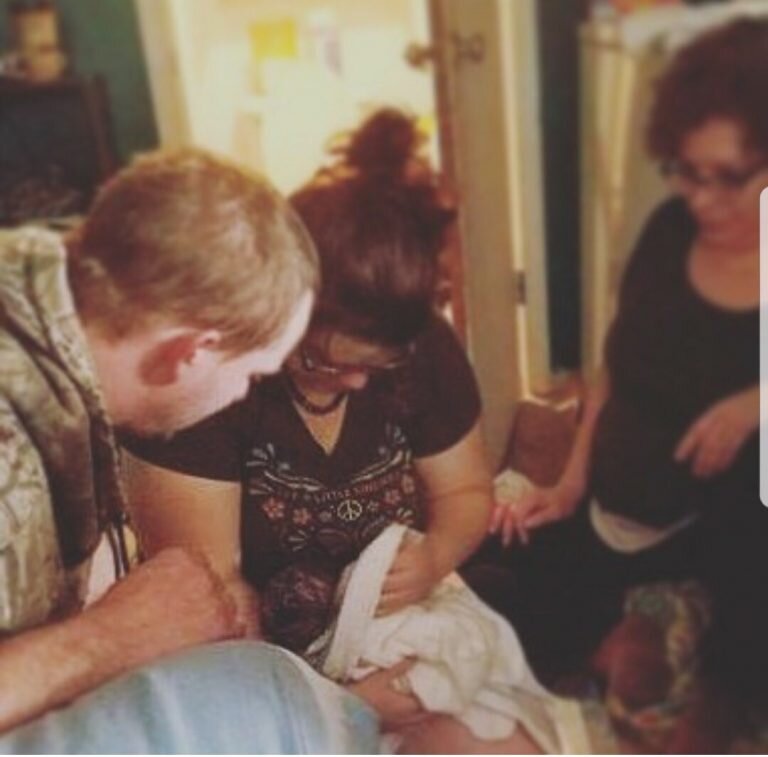What to Expect from Midwifery Care
As a homebirth midwife, I spend a significant amount of my work time meeting prospective clients who are deciding whether they want a homebirth, and which midwife they will choose to work with.. Sometimes we meet out someplace for coffee, other times I come to their homes. We discuss details of their pregnancies, prior births, hopes for this birth, and so on. I always like to tell them that I don’t really have a spiel; they just need to ask me whatever they want to know about my practice.
Frequently, they ask, “How does it all work?” (Generally, this refers to midwifery care…not the mechanics of getting a baby in or out.) I’m finding lately that I’ve answered that same question so many times that it is beginning to sound a little like a spiel to my ear, but I try to keep in mind that it is probably the first time this particular person has asked, and it is new information to her. With that in mind, I thought maybe I’d go ahead and turn that half-formed spiel into a blog post, and hopefully give at least an overview of the answer to that how-does-it-work question.
Strictly from a scheduling standpoint, prenatal care with my practice (and most out-of-hospital midwives) looks similar to the visit schedule on which OB patients are seen. My ladies typically start their visits around 12 weeks of pregnancy, when the greatest risk of miscarriage is past, and it’s possible to hear the baby’s heartbeat with a Doppler. I see them on a monthly basis until around 28-30 weeks, when they switch to biweekly care, and then go to weekly visits from around 36-37 weeks until the baby arrives. Some of my “veteran” repeat clients like to space their visits a little farther apart, which is fine as long as mom and baby are doing well and things look normal.
Scheduling is where the similarity to OB prenatal care ends. A typical prenatal visit with a CPM tends to last around 45-60 minutes. Moms who come to midwives after having been in OB care will often be surprised by this. They are probably used to spending that much time at their provider’s office, but most of it is spent in the waiting room or waiting alone in an exam room. They probably only see their provider for between 5-15 minutes, unless something is very wrong. When they find out how long our visits are, they often wonder what on earth we do for all that time.
The answer is: we visit. I do all my clients’ prenatal care in their homes, so for every visit, I come in and we sit down wherever is comfortable for the mom. We chat about how things are going in general, what is going on in her life. I like to find out how she’s eating and sleeping, how she’s getting along with her partner, extended family, whoever is important in her world. We’ll probably talk about all kinds of things that would seem not to be related to the pregnancy, like homeschool curricula, movies we’ve seen recently, new Instant Pot recipes, gardening, craft projects, chicken care. The family dog will probably demand some of my attention, and the older kids will want to help when eventually I get out my tape measure, fetoscope or Doppler, and blood pressure cuff to do the ten minutes’ worth of stuff that OBs do in their offices at each visit. From a medical-model standpoint, those clinical things are the whole point of the visit, and they only require a few minutes to perform. From a midwife’s point of view, those things give us a few pieces of potentially useful information, but 90% of what we need to know about our moms’ and babies’ well-being comes from the 45 minutes of chit-chat that just happened before that point…
One of the gentlemen I play music with when I’m not officially working once caught the tail end of one of my prenatal visits. He asked, “Is this all you do at work? Just sit around and drink coffee and shoot the s*&t?” Well, honestly, kind of. But all that s*&t-shooting is how I know how my clients are really doing and learn what is normal for them, as individuals so that I’ll know if things are veering off course. It is how I establish mutual trust and a level of familiarity that allows me to be in a woman’s environment during her labor without disturbing her unnecessarily the way that strangers (i.e. nurses or unfamiliar doctors-on-call) would do in a hospital setting. That familiar relationship, cultivated over many hours of individualized prenatal care, is the strong suit of old-fashioned, small-scale midwifery.
Eventually, after something like a dozen or so of these long, chatty visits, clients go into labor. What now? The exact details vary quite a bit, but generally, when a mom suspects she might be in labor, she calls. Maybe she’s having contractions that are getting consistently longer, stronger, closer together, and feel different than her practice contractions. Maybe her water just broke. Labor might be a slow gradual build-up over days or even weeks, there may be a false-alarm call or two (or more) before the real thing, or labor might hit like a tidal wave out of nowhere, barely allowing me time to get to the mom. (And yes, midwives do miss a birth once in a while, at about the same rate or a bit less than moms don’t quite make it to the hospital, or doctors don’t make it to their patients fast enough. ) In any case, however it may manifest, labor starts eventually.
When I get the call, I drop whatever I’m doing (and I do mean *whatever*) and head to my client’s home. I might get there with bedhead and mismatched socks, might drive through a blizzard, but I go. I bring in my bags with all my mysterious midwife stuff, and if it looks like it’s really labor, I will stay, and one of my assistants will come to help out, too.
My favorite clients have coffee made. Just sayin’.
If labor is long and slow, we might step out for a while, get a meal, run an errand, just to give the laboring mom some space, but we are always close by and available. Throughout labor, I monitor the mother’s and baby’s well-being closely, making sure that mom is eating, drinking, peeing regularly, moving around, resting between contractions, and that her mindset is conducive to progress. We listen to baby’s heartbeat regularly with a Doppler, and check-in frequently with the mom to see if she’s feeling him/her move.
Contrary to popular belief, there isn’t so much overlap between my job and that of a doula, and I highly recommend the services of a doula for many moms, especially those having first babies, first VBACs, or first out of hospital births I have a list of skilled local doulas and am always happy to make referrals. That said, I’m willing to do a bit of coaching, back-rubbing, or food-pushing to the extent that it doesn’t interfere with being able to tend to the more clinical side of things.
Just born!
Sooner or later, or much later, baby is born, and goes directly to mom. My assistant or I dry him off with warmed blankets and assess his muscle tone, breathing, color, etc. while disturbing the new family as little as humanly possible. We keep an eye on mom’s blood loss, get her into a comfortable position to deliver the placenta, and again, disturb mom and baby as little as possible while that process is happening. You’ll notice I didn’t mention cutting the cord here; I almost never cut a cord until after the placenta is delivered, and generally leave the placenta attached to the baby until we do the newborn exam, about an hour postpartum. (Is that a half-lotus birth?)
Once we’ve ascertained that mom and baby are stable and doing well, and we have things tidied up a bit and everyone is comfortable, we tend to make ourselves scarce (but readily available) by moving into the next room for about an hour. While the new family enjoys this “golden hour” of initial bonding, we are decompressing, drinking coffee, charting, and so on. Before we know it, almost, that first hour or so is gone, and we rejoin the family in the birth room, where we do a thorough newborn exam right there on the bed next to mom. It’s at this point that the umbilical cord finally gets cut; after such a long wait, it will have occluded on itself and doesn’t require one of those pesky plastic clamps.
Postpartum Check-up
After the newborn exam, assuming mom and baby are looking well, baby is nursing, and mom is able to eat, drink, and pee, we give some basic postpartum care instructions to the family, get them all settled in, and schedule a 24-48 hour visit. We finish up any remaining clean-up (there is usually surprisingly little) and pack up and head home.
After I leave a birth, my phone is on 24/7 for calls with any concerns. I see my mamas postpartum at 24-48 hours, again at a week, at three weeks, and six weeks, and am always on call for questions at this time. Sometimes an extra visit is warranted for breastfeeding help, weight checks, or a listening ear if postpartum depression is a problem.
In reality, it’s rare that the midwife/client relationship really ends at the six-week mark; I hear updates from many of my mamas, see their Facebook posts, run into them out in the community. As the years go by, I am seeing a growing community of families who believe in gentle birthing and parenting practices and healthy, natural living. The kind of care that midwives provide is very much in keeping with and conducive to these larger community connections, start to finish. But all that is more than I can cover in a five-minute spiel at a consult!


